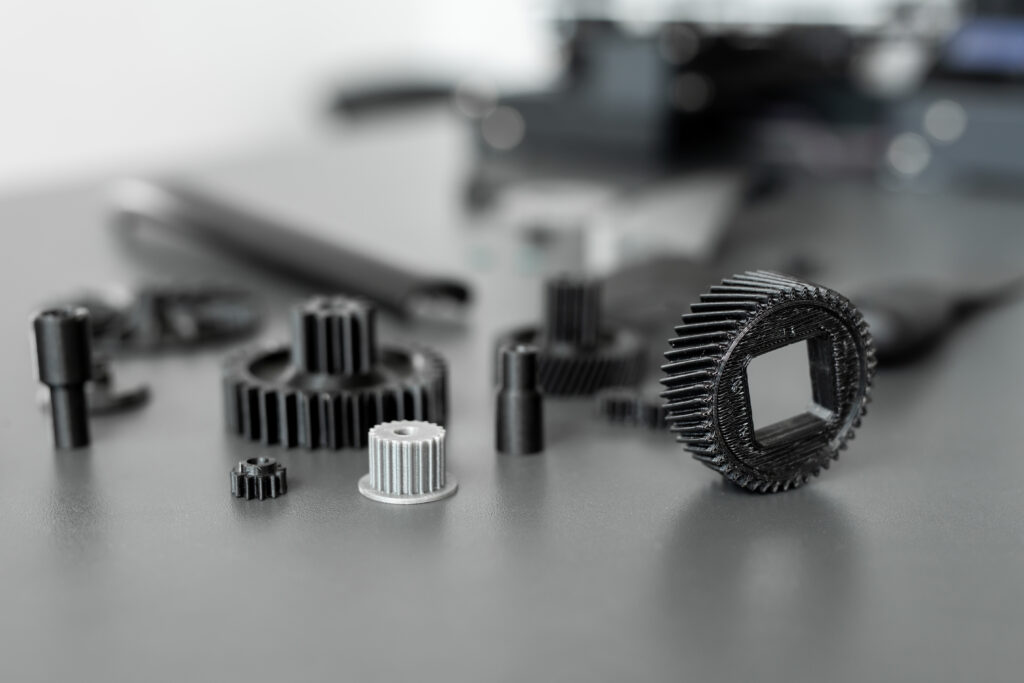Rapid prototyping best practices involve multiple factors to ensure compliance with industry standards. Determine your goals and budget, then align objectives for the best results. Here is everything you need to know.
Following rapid prototyping best practices can be costly and time-consuming, but it’s worth the investment. The purpose of rapid prototyping is to eliminate design flaws before inspection and distribution. It can also help product developers troubleshoot elements that don’t work as intended. Therefore, using RP without respecting standardized techniques can be detrimental.
Understanding the best practices for rapid prototyping helps ensure compliance with specific guidelines. It also creates a foundation for repeatable outcomes and consistent quality improvement. Rapid prototyping best practices can eliminate manufacturing obstacles and decrease waste to help cut costs. Are you taking advantage?
What are the rapid prototyping best practices, and how can you be sure to follow them? This article will explain the most crucial methods and provide beneficial insights for implementing each. Let’s get started.
Table of Contents
What Are Rapid Prototyping Best Practices?
Tips for Better Rapid Prototyping Processes
#1. Begin From the Inside and Work Your Way Out
#2. Prototype the Essentials First
#3. Look at Different Scenarios
#4. Develop Intuitive Testing Techniques
#5. Choose the Right Tools for Rapid Prototyping
Five Benefits of Following Rapid Prototyping Best Practices
Ten Ways to Make the Most of Rapid Prototyping Best Practices
What Is Rapid Prototyping?
“Rapid prototyping is an essential manufacturing process used by nearly every industry worldwide.”
It is a quick and affordable fast fabrication method that renders a physical part, model, or assembly. Many fabricators use sophisticated CAD software programs, advanced tooling techniques, and 3D printing (additive manufacturing) to complete orders.
Product and parts design require iterative processing. That means they need time for testing ideas, making improvements, and restructuring various elements. Without it, engineering teams can’t always determine the best approach to their respective industries. Rapid prototyping best practices allow collaboration until teams reach the desired outcome.

We offer fast, high-quality, tailored PROTOTYPING solutions for leading companies in a wide range of industries.
superior Rapid PROTOTYPING
The iterative loops increase prototype fidelity over time. Then engineers can incorporate additional details, moving from low-fidelity to high-fidelity faster than traditional means. Moreover, they can make timely changes to the design before sending it for mass manufacturing. Rapid prototyping might involve extra upfront fees, but it can help mitigate production costs on the backend.
DID YOU KNOW: The price you pay for rapid prototyping can depend on several factors, including design complexity, industry standards, and consumer demands.
What Are Rapid Prototyping Best Practices?
“Rapid prototyping best practices can help eliminate unnecessary delays but prolong lead times for unprepared teams.”
It prevents manufacturing oversights while forcing teams to comply with ISO regulations. However, RP should also streamline production, support innovation, and ensure top-quality designs.
Although the prototype is only a rough draft, experienced engineers can get the model as close to the real thing as possible. That’s because the golden rule of rapid prototyping is to test often. You should use industry best practices throughout each fidelity phase, catching minor issues before they become significant problems.
Here is a wise approach for using various prototyping fidelities:
- Low-Fidelity = Concept Testing
- Mid-Fidelity = Troubleshooting
- High-Fidelity = Interaction Testing
High-fidelity prototypes best test the user experience or demonstrate features to investors. Still, you won’t make it to that step without fabricating low-fidelity models for examination. Think of each phase as a placeholder for the future of your design. Expecting precision outcomes from rapid prototyping can be foolish.
Also, use updated and realistic data when evaluating your designs. Rapid prototyping best practices demand it. Incorporate meaningful content instead of placeholder text to produce top-quality prototypes. Plug factual information to minimize mistakes, bias, distractions, and compliance concerns. Then regularly discuss updates with your team to ensure accuracy.
Tips for Better Rapid Prototyping Processes
Rapid prototyping best practices depend on your team’s diligence and willingness to conform. Create products without obeying ISO standards for your industry, and risk wasting all of your resources. You can improve your end products and decrease liabilities with these savvy tips:
#1. Begin From the Inside and Work Your Way Out
Teams often determine the fundamentals before concentrating on the finer details. That means getting a handle on the primary elements before worrying about the specifics. However, this helpful outside-in approach might not align with rapid prototyping best practices.
Take a more user-friendly approach when fabricating prototypes. Use the inside-out technique instead. This method prioritizes various data points essential to the user’s experience and builds multiple elements on top. Ask your team to help rank each new adjustment in order of priority using consumer or investor feedback.
#2. Prototype the Essentials First
“Rapid prototyping best practices insist that teams manufacture the most crucial elements before anything else.”
Create only the parts you need, and then build out from there. You shouldn’t get too caught up in the nitty-gritty, or you’ll cost the team time and money. There is no such thing as a perfect prototype, only a perfectly manufactured product.

We offer fast, high-quality, tailored PROTOTYPING solutions for leading companies in a wide range of industries.
superior Rapid PROTOTYPING
Quick and cost-effective iterations are the keys to success. Think of functionality, practicality, and repeatability. How does your prototype answer those demands? Get the basics down and transition to more complex manufacturing processes afterward. You can always ask your team for direction or advice.
The prototype’s detail is less important than its purpose. However, the elements you focus on will also depend on the interactions you want to test. For example, if you need a part for a specific industry (aerospace, automotive, medical, etc.), create a mid-fidelity prototype to troubleshoot flaws before interfacing.
#3. Look at Different Scenarios
One of your responsibilities is considering the various user scenarios for each design. Rapid prototyping best practices always include provisions for distribution and sales. However, the most comprehensive RP approach involves creating multiple prototypes for different systems. Take medical supply manufacturing, for example.
Some doctors and hospitals might require specific tools for life-saving procedures. Yet, many patients could need similar items for at-home care. Medical industry leaders should factor in the various scenarios for their products before prototyping an entire inventory. The same can be said for any industry following rapid prototyping best practices.
#4. Develop Intuitive Testing Techniques
Rapid prototyping best practices also include knowledgeable and realistic user testing. The reason is that engineers require objective and practical feedback about various design elements. They cannot implement meaningful changes without it. However, biased feedback can blind engineers to significant problems or relegate precious resources to one specific feature.
Keep the user’s wants and needs in mind when testing prototypes. Maintain a balanced point of view between newcomers and the experienced for a well-rounded approach to designing innovative products. Then do the same thing each time you redesign parts or introduce items to unfamiliar territories.
#5. Choose the Right Tools for Rapid Prototyping
Rapid prototyping tools are crucial to the outcomes. However, your chosen tools will likely depend on various factors, including your ideation stage. For example, prototypes in the conceptualization phase could require different tools than prototypes ready for testing. Meanwhile, high-fidelity models typically need advanced machining to fabricate.
“The bottom line is straightforward: Rapid prototyping best practices encourage frequent testing, industry conformity, and consideration for the user. Multiple benefits await those who comply.”
In the beginning, you can use rudimentary tools, including a two-dimensional pen-and-paper drawing. Multiple rapid prototyping tools help you build models without specific coding knowledge or equipment. Still, high-fidelity prototypes almost always call for advanced manufacturing methods. These sophisticated techniques help facilitate team collaboration and reduce lead times.
Modern tooling helps engineers fabricate realistic prototypes that simulate different aspects of a design. That allows teams to test assumptions and adjust hierarchies for optimal interactions and implementations. Rapid prototyping best practices help you discover what works and what doesn’t before it’s too late.
Five Benefits of Following Rapid Prototyping Best Practices
Rapid prototyping best practices aren’t rigid rules for your team to follow. They’re more like suggestions to help you make the most of your investment. Because RP is an essential process for modern manufacturing, paying attention is beneficial. You can help develop products that satisfy industry requirements, increase sales, and give your company a competitive edge.
Several tangible benefits to rapid prototyping best practices are evident upon closer inspection. Here are just a few:
- Enhanced End User Involvement – Create parts for products that sell by developing prototypes for your most crucial audience. Use consumer and investor feedback to make meaningful adjustments to the design.
- Early Testing Capabilities – Roll out innovations faster with comprehensive testing during each prototyping stage. Get practical information about various elements to excite investors or help developers.
- Boosted Stakeholder Participation – Allow stakeholders to give suggestions and opinions during various phases. Then incorporate their recommendations under ISO guidelines.
- Better Problem-Solving – Foster improved collaboration across diverse teams to streamline and strengthen your approach. Rapid prototyping best practices encourage cooperation for optimal outcomes.
- Shortened Lead Times – Rapid prototyping requires additional time for building and evaluating. However, it can also prevent time-consuming delays and expensive issues.
Rapid prototyping best practices help engineers identify concerns before initiating production. This can ensure a timelier approach for competitive industries. Improve your time-to-market without sacrificing quality with standardized RP.
Ten Ways to Make the Most of Rapid Prototyping Best Practices
Your team relies on rapid prototyping best practices to streamline production and cut the fat. Meanwhile, the user depends on you to develop practical solutions for modern-day problems. Both sides must make the most of RP by implementing standardized procedures or providing meaningful feedback to developers.
However, each party can go a step further with these ten techniques:
- Talk to Your Team About the Expectations. Find out what everyone wants and needs to determine the best approach.
- Review the RP Service Quality. Look at your chosen provider’s service portfolio for an idea of what to expect.
- Develop a Rapid Prototyping Strategy. Formulate a plan for RP implementation, including your fidelity requirements during each phase.
- Use Data Analysis to Restructure Plans. Gather data and user feedback to integrate the necessary changes to your design.
- Decide Your Preferred Tooling and Materials. Pick the desired or required materials for each project before initiating RP services.
- Determine Your Fabrication Budget. Calculate your spending limits to determine the parameters for your creation.
- Leave Room for Crucial Adjustments. Don’t forget the purpose of rapid prototyping. It’s supposed to reveal issues you need to fix.
- Implement Feedback for a Better Design. Use suggestions, recommendations, and opinions to develop improved techniques and enhanced outcomes.
- Compare Outcomes with ISO Guidelines. Ensure your final products comply with ISO standards before mass manufacturing or distribution.
- Reiterate for Higher Fidelity. Return to the drawing board to uncover missing elements and improve your prototype design.
Need more tips? Talk to a rapid prototyping expert for tailored guidance.
Conclusion
Rapid prototyping best practices help ensure compliance with strict industry standards. They can also help teams collaborate for better outcomes while reducing waste and cutting lead times. Your job is to determine the most advantageous approach to fabricating new designs. High-quality RP services mean top-notch results, even if you begin with a rudimentary concept.
Engineers and manufacturers require rapid prototyping best practices to meet consumer demands consistently. They need high-precision fabrication for product excellence but can’t achieve new levels of precision without testing. Following rapid prototyping best practices means continued ISO compliance despite innovations, issues, or otherwise.
Prepare your products for mass manufacturing and quick distribution with RP. Manage each crucial factor to meet or exceed industry standards. Determine your goals and budget, then align objectives for the best results. Or reach out to your team for more specific information and a detailed planning guide.
 About the Author
About the Author
James Murphy is the founder and CEO of HLH Rapid – a hybrid CNC machine shop fusing Western service and quality with Eurasian industry influences for over 14 years. His advanced enterprise uncovers cost-effective rapid injection molding techniques to remain unmatched by industry competitors. Murphy’s full-service fabrication and manufacturing methods span six dedicated zones, from 3D printing and vacuum casting to sheet metal prototyping and project management. His expertise also includes high-efficiency machining within strict yet volatile markets.
Murphy earned an MBA after becoming inspired by his father’s hands-on craftsmanship. As a budding entrepreneur, he taught English and studied Chinese to pursue pioneering objectives. His groundbreaking approach helps build the future by providing well-rounded manufacturing services to innovative Western businesses. When he’s not offering upscale RP and CNC, James enjoys art-house movies, Thai boxing, and spending time with his growing family.
Visit HLHRapid.com for an instant quote on rapid prototyping services.


